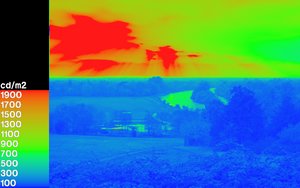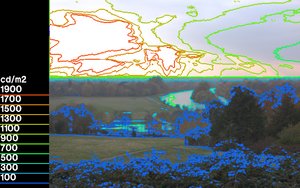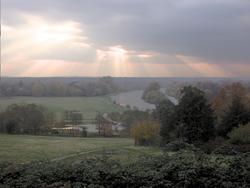Example
The images below were taken with a Nikon Coolpix 995 digital camera. The built-in exposure bracketing allows to take a series of 5 images which can be be up to +/-2 f-stops under or over exposed.





The exposure-bracketed images can be assembled into one high-dynamic range (HDR) image. This image has a much higher range of brightness values that it can store. The images in the animation below are produced from the same HDR image in Radiance' RGBe format. The exposure can be set interactively in the ximage viewer which is part of the Radiance suite of programs.
Modern digital cameras store additional information in the JPEG file they produce. This includes details about the camera, as well as exposure values and a thumbnail preview. The information is kept in the header of the file and is stored in EXIF format.
To determine the expose of an image, the following information is required:
- ISO film speed
- Aperture
- Exposure time
All of this information is stored in the EXIF header information. It is therefore possible to use an HDR image as created from a series of exposure-bracketed images to determine the actual luminance distribution within the photographed scene, although this is not not as accurate as using a calibrated luminance meter or a (very expensive) calibrated CCD camera.
Exposure = log2 ( Aperture2 * (1/Shutter speed) * (ISO Speed/100) )
With this information, false colour images may be created that map the luminance of a pixel to an arbitrarily chosen colour. Usually, blue tones are chosen for dark areas, while red tones indicated high luminances.


Another application of the HDR information contained within the image is to simulate how the scene would appear to a human viewer. Radiance has the pcond command for this.

If you would like to try see what you can use a HDR image for, please feel free to download this one of Richmond Park in South London (2.4MB) which is what the examples above are produced from. It is in Radiance RGBe format. The file has a .hdr extension. You might want to change this to .pic, depending on what software you use.
More examples of tonemapping are shown on the Tone-mapping page and the Gallery page. If you are more interested in using HDR for quantifying the luminous environment, visit the last one of the R-Y-O Demo pages
